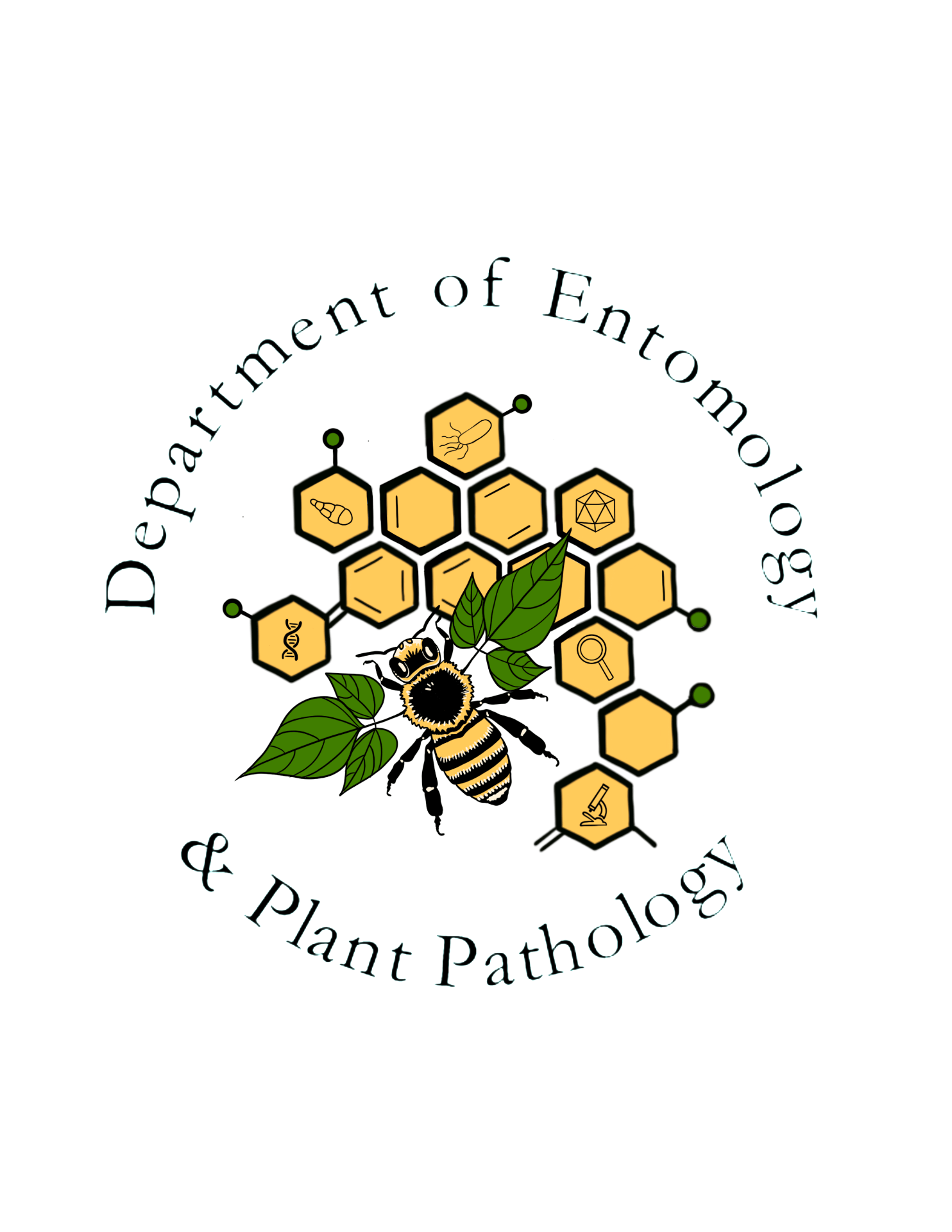
Welcome to the University of Arkansas Arthropod Museum!
Arthropods are the earth’s most diverse organisms. Over 60% of all known living species, both plant and animal, are arthropods—insects, spiders, mites, crustaceans, and related groups. The insects account for over half of all species described thus far worldwide, and they are the dominant form of life in terrestrial environments. There are perhaps 35,000 or 40,000 known species of arthropods recorded from Arkansas, and it is still not uncommon to find species here that are unnamed and new to the scientific world.
Pest arthropods cause harm to man and his structures, crops, and livestock, while beneficial species pollinate crops, prey upon pestiferous forms, or serve as food for wildlife. In an environmentally conscious society, arthropods are regarded as essential components of our ecosystems. Knowing the name of an arthropod is the key to unlocking the store of accumulated knowledge about its life history, distribution, and relationships to man. Unfortunately, most arthropods are not easily identified to species level by the general student, or even by trained, professional entomologists. Even the most dedicated insect specialists find it difficult, and sometimes impossible, to identify some species they encounter.
The University of Arkansas Arthropod Museum houses the largest research and reference collection of insects and other arthropods in the State of Arkansas. The Curator cares for the collection and makes annual efforts to increase the size and diversity of the collection so that it becomes ever more representative of the Arkansas fauna. Museum specimens in all groups of arthropods are professionally identified using specialized techniques, equipment, and literature; they are therefore priceless reference resources for comparison with unknown specimens. An extensive literature collection is at hand to facilitate timely identification of pests, beneficial species, and other species of concern. The Curator provides identification and information services to extension personnel, researchers, and the general public. Loans of specimens are sent to qualified researchers around the world. Auxiliary collections are maintained for demonstration and teaching purposes. A growing website is dedicated to assisting the Museum in its extension, research, and education missions.
The Museum’s collection serves as the major reference resource for arthropod identifications in the State of Arkansas. With the aid of the specimens and associated literature collections, the Curator annually provides hundreds of reliable, professional arthropod specimen identifications and information services. These services assist researchers, government agencies, businesses, and individuals in their efforts to control insect pest problems and protect the environment. Label data associated with specimens in the Museum record when and where species occur in the state. The Museum, located in the Ozark Plateau within a short distance of the Ouachita Highlands, maintains one the few large collections of the insect faunas of these two species-rich and faunistically unique, yet poorly surveyed, areas.
Each year, Museum specimens are displayed at various venues, giving upwards of 10,000 citizens some exposure to the world of insects. This website reaches out to researchers with a bibliography of Arkansas arthropod biodiversity, and it reaches out to extension specialists and the general public with a series of illustrated popular articles, titled University of Arkansas Arthropod Museum Notes, on important and interesting regional species.
Please enjoy your visit to the University of Arkansas Arthropod Museum!
Insect I.D. Service
The University of Arkansas provides arthropod (arachnids, insects, etc.) identifications to individuals, businesses, schools, colleges, and government agencies.
This service is provided free of charge for single specimens and small samples. A consulting fee will be charged for identification of large numbers of specimens and samples. It is often possible to satisfactorily identify specimens from high-quality digital photographs. Photographs should be emailed to enpl@uark.edu. Include a note describing where and when the specimen was found, what it was doing, where it occurred, and why it is of interest to you. Also include your name, address, telephone number, and email address.
If you need a response ASAP, please contact your local county extension office – county offices list with links.
Most specimens – those with relatively hard bodies – can be killed by placing them in the freezer for a few minutes. Wrap them lightly in tissue paper and place them in a small box, vial, or other sturdy, crush-proof container. Soft-bodied specimens, such as caterpillars, grubs, and other immature arthropods, can be killed by placing them in hot water. Bring a small pot of water to a boil, then remove it from the stove and drop the insect into the water. Remove it after a few seconds have passed. Usually no more than one minute is required. Place the insect in a vial of alcohol. Spiders, ticks, and many other arthropods can be dropped directly into a vial of alcohol.
Specimens should be mailed to the Entomology Arthropod Museum, 319 AGRI, 1 University of Arkansas, Fayetteville, AR 72701.
